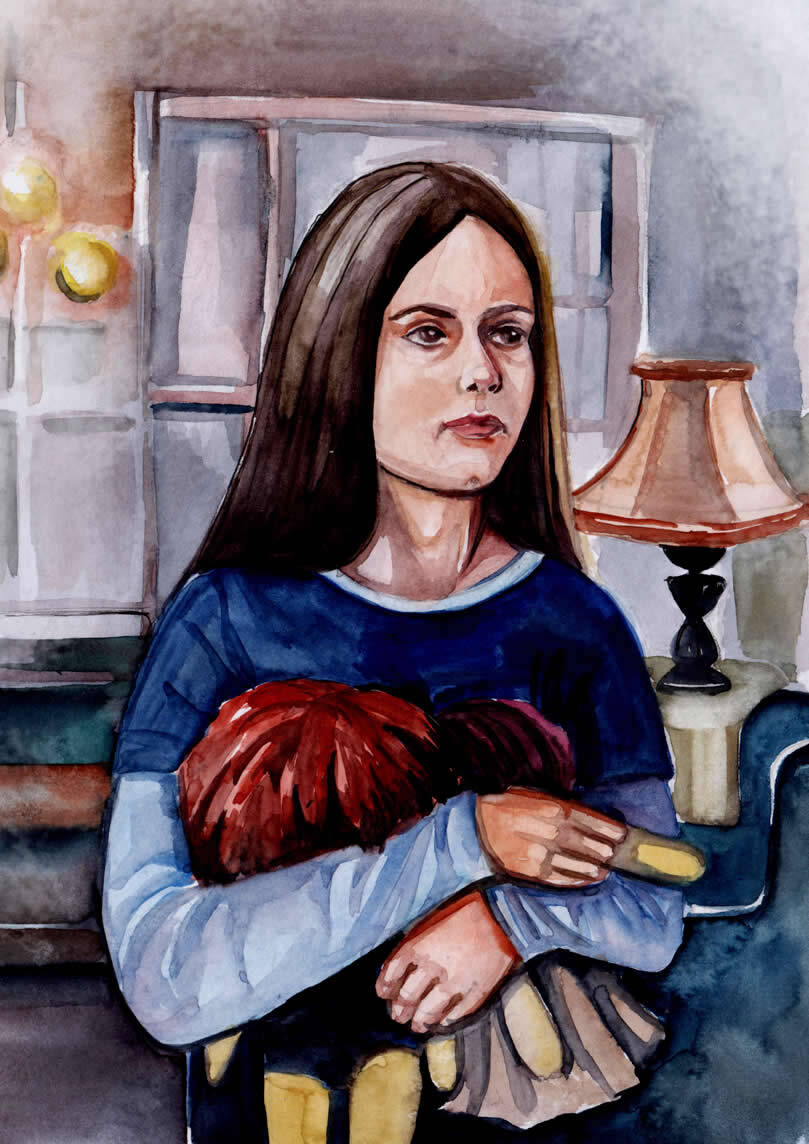Rose Red Facts, Trivia and Bloopers
Facts About Stephen King’s Rose Red You Didn’t Know
Technically, Rose Red (2002) is a TV miniseries. With that said, the film is frequently referred to as a movie, and is played nowadays pretty much like a movie. Still, however, the movie is split up into sections which are conveniently broken down for commercial spots. It is a rather long movie running a total of 254 minutes…but each scene is magic in its own right! Today, Rose Red remains a gem among horror films, especially when it comes to haunted houses. Without further ado, let’s go over a little Rose Red trivia and get our spook on!
Behind the Scenes Trivia & Fun Facts
- Although they are divorced today, actors Jimmi Simpson and Melanie Lynskey fell in love and married after meeting on the set of Rose Red.
- Rose Red is based on Sarah Winchester’s “Winchester Mystery House.”
- Stephen King was strongly influenced by Shirley Jackson’s book “The Haunting” (also turned into a movie, and remade a few years before Rose Red in 1999.
- Rose Red was a breakout role for actress Emily Deschanel, who played a psychic-type, Pam Asbury, in the movie.
- Actress Nancy Travis, who played Professor Joyce Reardon, was actually pregnant during the filming of Rose Red, and can be seen in different weights throughout the film.
- Rose Red was filmed in only 4 months!
- Rose Red was made for TV as a miniseries and thus was not permitted to allow curse words in the script. Still, Kevin Bolinger is seen recording the words “BULL SH*T” on his notepad during his ease dropping on Professor Reardon’s slideshow about Rose Red.
- Stephen King had super high aspirations for Rose Red being the best haunted house horror movie of all time, and ever. He planned it to be as unforgettable as it is, specifically citing the advantages of a miniseries format allowing for a larger audience and more story-telling time.
- Actor Matt Ross, who played psychic Emery Waterman, is a very strong believer in the supernatural in real life, explaining that his mother has sworn to have seen a ghost (his real life mother, that is!).
- Due to dance scenes, the cast needed dance lessons and attended Blue Skies Studios in Seattle to learn how to properly accommodate Glenn Miller.
- A reference to Stephen King’s first novel Carrie is found in Annie, a girl with telekinetic powers and the ability to rain stones.
- Rose Red was a breakout role for actor Jimmi Simpson.
- Actor David Dukes, who played Professor Carl Miller (antagonist), died of a heart attack while playing tennis the night before returning to shoot the remainder of his scenes. He was already such a large part of the movie it were impossible to replace him (and would have been in terrible etiquette to do so). Instead, Craig Baxley Jr (a stunt coordinator) completed the scenes involving the zombie version of Professor Miller.

- The film had a promotional and marketing budget of $200,000.
- The Rose Red script was delayed from finish after Stephen King suffered a car accident and required a little down time to recover.
- Although Rose Red was released in 2002, the DVD would not be released until 2007.
- Originally, Stephen King and Steven Spielberg were going to make Rose Red together, however, after a variety of creative differences…King decided to buy the rights to the movie from Spielberg…who wished it would have had more action-based scares.
- Parallels can be made between Rose Red and an earlier Stephen King’s “The Shining.”
- Although the original budget for Rose Red was a modest $3 million, which is a somewhat normal amount for such a project at that time…it ended up absorbing an astounding $35 million by the end of it’s shoot!
- The sounds of hammers and construction throughout the house is based upon the sounds visitors report hearing within the real-life Winchester mansion.
- There is a prequel to Rose Red, in book format only, entitled “The Diary of Ellen Rimbauer: My Life at Rose Red” (2001). This book provides a lot of backstory about Ellen Rimbauer and Rose Red itself which coincides with the movie. Ellen Rimbauer was Steve Rimbauer’s grandmother.
- Despite being based upon the Winchester Mystery House, Rose Red was shot using the Thornewood Castle in Tacoma, Washington.

Logical Errors and Goof Ups (Bloopers)
- Rose Red, as polished as it may be (with a budget of $35 million for a miniseries, it should be), had a number of goof ups and bloopers, as well as logical contradictions. Some of the harder bloopers to spot include:
- Kevin Bolinger’s graduation date is seemingly weeks away (insinuated by Professor Miller), though the year is supposedly 2001. During his public interrogation of Professor Joyce Reardon he states he is a part of the Class of 2003.
- Ellen Rimbauer supposedly disappeared at age 70 in 1950, though based upon earlier information, she would have been 64.
- Annie’s blood stained bandage becomes clean and then soiled again multiple times during perspective changes.
- The color of the rose on the stained glass window of the tower changes color throughout the film.
- During Kevin Bollinger’s public interrogation of Professor Reardon, Professor Miller is seen leaving the sound booth above the classroom and then reappears in the booth within the same scene.
- The phone call from Steve Rimbauer to Professor Miller made from Rose Red is received by Miller’s cell phone within his car…though the movie receives the voicemail on his answering machine in his office.
- Joyce must have smeared blood on the face of Professor Miller across a number of shots, as Professor Miller’s collar is seen with blood, clean from the blood and with the blood again in a continuity error.
- Although the “spook hunt” planned for Rose Red is for Memorial Day weekend in late May, college football is seen playing twice in the movie as though it is live. College football season runs from September to January.
- Although Steve Rimbauer states he will be tearing Rose Red down on the first of July, the end of the movie fast forwards six months and low and behold, Rose Red survived much longer!
- Emery Waterman’s mother received a credit card bill that references an 11 digit customer service number, (800) 455 – 87653.
- No one can enter Rose Red’s premises without a gate opener, however, a pizza delivery man seems to be able to get to the front door!
- The roses placed at the front of Rose Red at the end of the movie change arrangement.

Tritone’s love of horror and mystery began at a young age. Growing up in the 80’s he got to see some of the greatest horror movies play out in the best of venues, the drive-in theater. That’s when his obsession with the genre really began—but it wasn’t just the movies, it was the games, the books, the comics, and the lore behind it all that really ignited his obsession. Tritone is a published author and continues to write and write about horror whenever possible.
